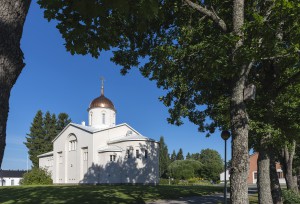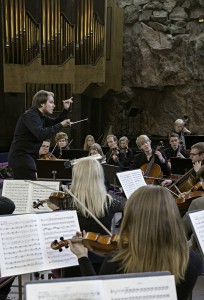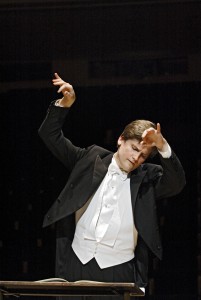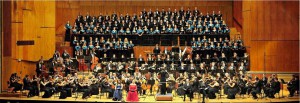Heinäveden Musiikkipäivät järjestetään 29.6.-3.7.2016. Helsinki Sinfonietta soittaa kolme sinfoniakonserttia Heinäveden kirkossa ja juhlien päävierailijoina ovat Jorma Panula, Olli Mustonen sekä Jaakko Ryhänen.
Heinäveden Musiikkipäivien 2015 toteuttaman Sibeliuksen sinfoniat -syklin jälkeen avajaiskonsertissa 2016 huomiota saavat Sibeliuksen aikalaiset Leevi Madetoja ja Erkki Melartin. Juhlien residenssiorkesteri Helsinki Sinfonietta soittaa kapellimestari Erkki Lasonpalon johdolla Madetojan Kullervon sekä Melartinin sinfonian nro 4 ”Kesäsinfonia”, jonka naistertsetin vokaaliosuudet tulkitsevat Sibelius-laulukilpailujen voittajat Hedvig Paulig ja Annastiina Tahkola sekä Mustakallio-laulukilpailujen finalisti Maiju Vaahtoluoto. Lisäksi konsertissa kuullaan osia Melartinin Aino-oopperasta.
Torstaina 30.6. akateemikko, kapellimestari Jorma Panula johtaa näyttämöversiona toteutettavan oman teoksensa Peltomiehen rukous. Esiintyjinä Tuulivoima-kuoro ja Peltomiehen roolissa baritoni Juha Kotilainen.
Helsinki Sinfoniettan konsertissa perjantaina 1.7. pianotaiteilija-säveltäjä-kapellimestari Olli Mustonen johtaa oman teoksensa Triptyykki sekä Tšaikovskin sinfonian nro 4. Hän soittaa myös konsertin solistina Mozartin C-duuri-pianokonserton KV503.
Juhlien päätöskonsertissa sunnuntaina 3.7. Helsinki Sinfoniettan solistina laulaa basso Jaakko Ryhänen. Juhlat päättyvät Dvořákin sinfoniaan nro 9, ”Uudesta maailmasta”. Konsertin johtaa juhlien taiteellinen johtaja Erkki Lasonpalo.
Uutuutena vuoden 2016 juhlilla ovat päivittäiset kamarimusiikkikonsertit sekä iltaklubit, joiden punaisena lankana toimii runouden ja musiikin yhdistyminen. Päänumeroina kuullaan Stravinskyn Sotilaan tarina (la 2.7.) sekä Schönbergin Pierrot lunaire – Kuuhullu Pierrot (to 30.6.) Helsinki Sinfonietta Ensemblen, Tuuli Lindebergin ja Timo Torikan tulkitsemana.
Konsertteja järjestetään myös Valamon luostarissa, jossa vierailijoina kansainvälisen Night and Sun -kilpailujen voittajajousikvartetti Postiglione (la 2.7.) sekä Konevitsa-kvartetti (su 3.7.) ortodoksista kirkkomusiikkia tulkitsemassa.
Luostarin vierailija pääsee nauttimaan myös taiteesta. Valamon museotasoinen myyntinäyttely Via Finlandia on esillä koko kesän ja mukana on töitä kultakauden taiteen mestareilta, kuten Gallen-Kallela, Edelfelt, Wiik, Thesleff, Sallinen, Aaltonen, Nelimarkka, Picasso, Matisse, Dalí ja Miró.
Heinäveden kirkon taidenäyttely on avoinna 27.6.-7.8. Taiteilijavieraina kesällä 2016 ovat kuvataiteilijat piispa Arseni, Kuutti Lavonen, Antti Ojala sekä kuvanveistäjä Matti Peltokangas.
http://www.heinavesimusic.fi








